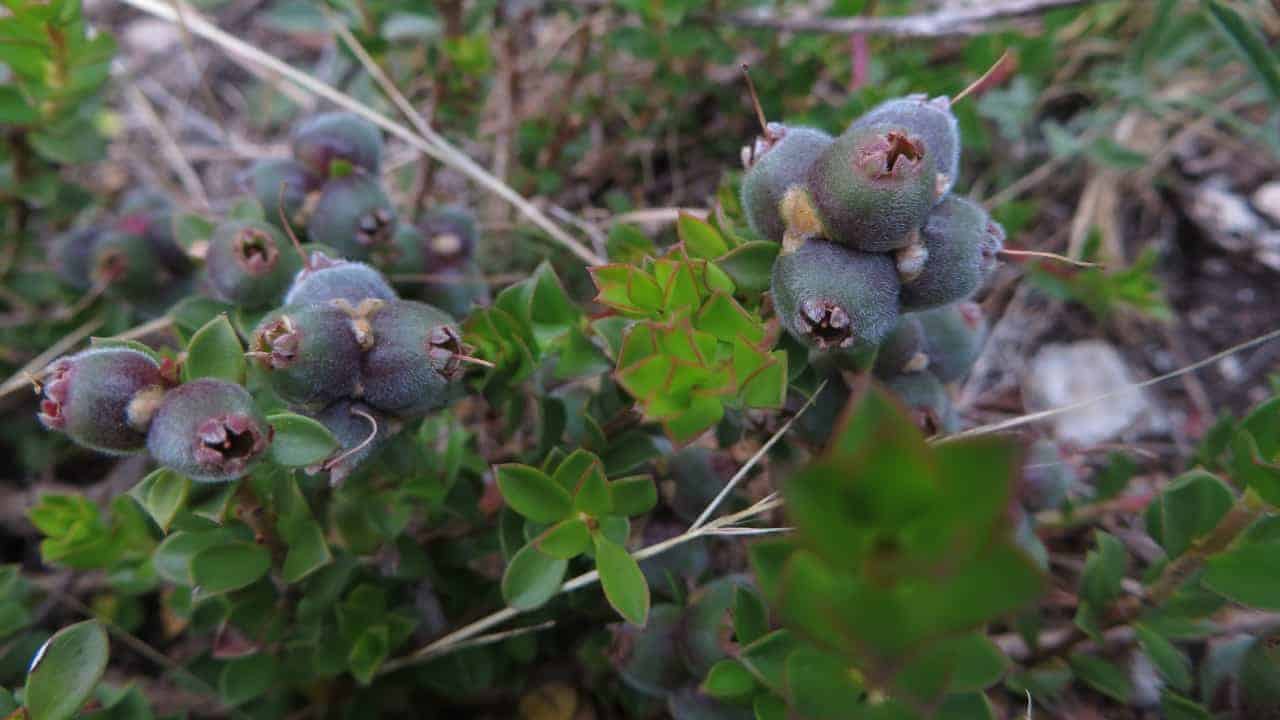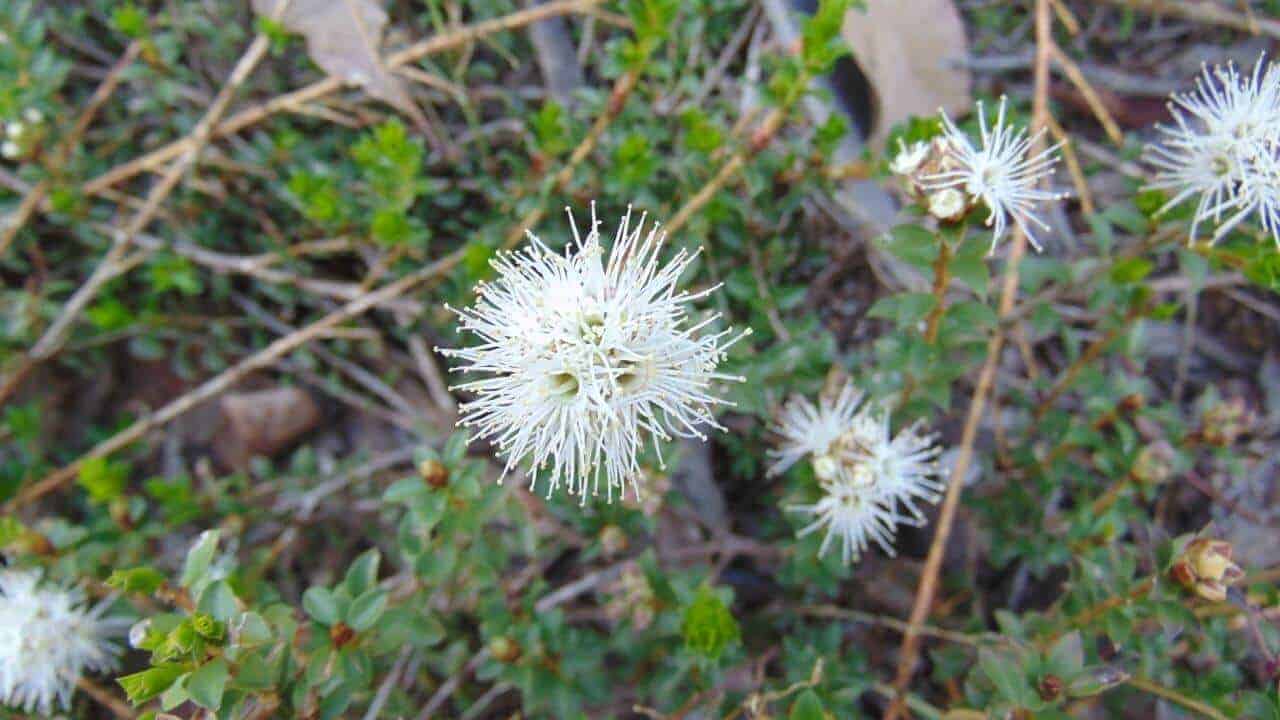Muntries
Kunzea pomifera
This woody plant bears clusters of green berries that turn purplish/red and fragrant as they ripen. Berries are about 1cm in diameter and crunchy in texture with the flavour of a spicy apple. Perfect for eating raw in salads and cheese platters, or cooked in jams, pies, muffins, puddings or with meats. They contain up to four times more antioxidants than blueberries.
Small white flowers (resembling gum blossom) will appear in the Spring. Little maintenance is required to get this plant going, but for best results, keep the soil moist throughout the flowering and fruiting season and avoid disturbing the roots. For an easier harvest, you might want to grow your muntrie upright on a low trellis.
Muntrie is a dense groundcovering plant that handles full sun or dappled shade, as well as sandy soil and some salinity. As a ground cover, it can be used as an effective weed-suppressing species in a garden bed. Leaves are petite and bright green, and grow along upright stalks.
At just under half a metre in height, the Muntrie works in pots, planter boxes and garden beds, filling up gaps, awkward corners and sandy narrow beds.
Aboriginal name(s):
- Ngurp (Bunganditi, VIC & SA)
In the wild, this plant can survive in Victorian and South Australian rainfall conditions. In a domestic garden, you’ll see better results by simply watering during long dry spells.
How do I train my Muntrie onto a trellis?
Space your wires about 10-20cm apart on a 1m high vertical trellis. Carefully weave your Muntrie branches through and along the wires, using ties to help secure the plant if necessary. If trellising your Muntrie plant, prune just before winter to help thicken the stems and prevent overcrowding.
Why is my Muntrie dying?
There could be many reasons but dieback in Muntrie may be due to root rot or certain strains of fungi in the soil, most often caused by poor drainage. Transfer your plant into a sandier growing mix.

Suitable for full-sun

Suitable for part-shade

Suitable for pots

Height 30cm
Width 2m

Tolerates sandy soils

Fruits from:
Year 2-3 onwards

Tolerates salt

Bird attracting

Attracts bees & insects

Attracts lizards

Suitable for gaps


